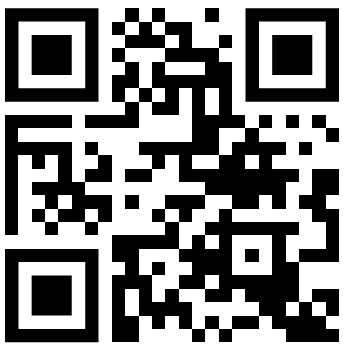Using the Publimath Database to Bring History into our Teaching
This article presents Publimath, a bibliographic database that contains the works of IREM (Research Institutes in Mathematical Education) and APMEP (Association of French Professors of Mathematics), as well as numerous other resources in various languages that have been identified by the editorial team as relevant to mathematics instructors. More than 8000 items associated with the history of mathematics, both original historical sources and accounts of classroom experiments, are included in the database.
The first part of this article is an answer to the question: Who manages Publimath?
The second part provides an orientation to the database itself.
 |
Using the Publimath Database to Bring History into our Teaching: Two Important Actors in French Mathematics Education
The IREM Network consists of 28 regional IREMs (Institutes for Research on Mathematics Education) in France. It has been funded by the Ministry of Education and the universities since 1969. National committees (called CII = Commission Inter Irem) are organized either around a level of education or a theme. Two of these CII, Repères IREM and Publimath, are intended to disseminate the work of IREM. The CII History and Epistemology of Mathematics coordinates the regional groups that work with history, philosophy and/or epistemology of mathematics.
The APMEP (Association des Professeurs de Mathématiques de l'Enseignement Public) was created in 1910. It is a federation of 26 regional associations of mathematics teachers, with regional activities and national committees, funded by membership fees and the sale of its productions.
Both organizations act as an interface between research (in history and/or didactics) and teaching/training, bringing together teachers of mathematics from kindergarten to university. They produce paper and digital working documents that are published by the IREMs or APMEP themselves, as well as conference proceedings, journal articles and book manuscripts for submission to outside (academic or commercial) publishers.
Both organizations also have websites that focus in part on the history of mathematics:
- The APMEP website is https://www.apmep.fr/. The page dedicated to the History of Mathematics group is https://www.apmep.fr/-Histoire-des-maths.
- The national IREM website is “Le Portail des IREM”: http://www.univ-irem.fr/.
- The page dedicated to the CII “Histoire et Epistémologie des mathématiques” is http://www.univ-irem.fr/spip.php?rubrique15.
Using the Publimath Database to Bring History into our Teaching: An Overview
Publimath is a joint operation of the IREM Network and APMEP. It is a database that catalogues not only the work resulting from research carried out in the IREM network or by APMEP, but also any publication useful to the mathematics teacher. As such, it conveniently offers access to all in-house material (productions of the two associations) alongside other resources related to teaching, learning, and scientific culture. These include:
- the working documents posted on the IREM websites;
- books and journals of the IREM network and APMEP;
- proceedings of conferences such as HPM (the International Study Group on the Relations between History and Pedagogy of Mathematics) and ESU (European Summer School);
- papers published by learned societies of mathematics;
- books produced by external (commercial or academic) publishers;
- websites, videos and other educational materials.
Publimath is freely accessible to anyone, as is the associated database “Bibliothèque numérique des IREM” (IREM Digital Library). These resources are useful to the entire educational community of mathematics teachers, from school to university, teacher trainers, and students training to become math teachers. They are also of interest to researchers in didactics, in history and in the history of mathematics education, as the majority of these resources have long been used by teachers in France and thus offer valuable information on French curricula and didactical practice.
Using the Publimath Database to Bring History into our Teaching: Les Fiches
Each item in the Publimath database is described in a "fiche". There were 28,886 fiches as of April 3, 2019. The following example is: http://publimath.univ-irem.fr/biblio/ACF11023.htm.
|
Auteur(s): Smestad Bjorn ; Nikolantonakis Konstantinos Titre : History and Epistemology in Mathematics Education: Proceedings of the Sixth European Summer University (ESU 6). Historical methods for multiplication. p. 235-244. (Méthodes historiques de multiplication.) Editeur : Verlag Holzhausen GmbH Vienne, 2011, Autriche Type : chapitre d'un ouvrage Langue : Anglais Support : papier Public visé : chercheur, enseignant, formateur Classification : F40 Résumé : Notes : Mots clés : |
Some comments :
The button  gives access to an abstract in English:
gives access to an abstract in English:
|
This paper summarizes the contents of our workshop. In this workshop, we presented and discussed the “Greek” multiplication, given by Eutokios of Ascalon in his commentary on The Measurement of a Circle. We discussed part of the text from the treatise of Eutokios. Our basic thesis is that we think that this historical method for multiplication is part of the algorithms friendly to the user (based on the ideas that the children use in their informal mental strategies). The important idea is that the place value of numbers is maintained and the students act with quantities and not with isolated symbols as it happens with the classic algorithm. This helps students to control their thought at every stage of calculation. We also discussed the Russian method and the method by the cross (basically the same as “Casting out nines”) to control the execution of the operations. |
The phrase "langue: anglais" indicates that the paper is written in English. If you want only items written in a specific language, go to the page recherche avancée, click on Langue, then choose “anglais”, or “espagnol”, or etc. The database contains several hundred papers in English.
The symbol  means that you can find the pdf online, either with direct access or through a link to another site. There are more than 10,000 documents of this type, including those in the bibliothèque numérique for which you can get the paper by clicking on the phrase “Bibliothèque numérique des IREM et de l'APMEP.” If you want to see only the items available on line, go to the page Recherche avancée, then click on Ressource(s) en ligne
means that you can find the pdf online, either with direct access or through a link to another site. There are more than 10,000 documents of this type, including those in the bibliothèque numérique for which you can get the paper by clicking on the phrase “Bibliothèque numérique des IREM et de l'APMEP.” If you want to see only the items available on line, go to the page Recherche avancée, then click on Ressource(s) en ligne . If you use the simple search feature, papers available online have the symbol
. If you use the simple search feature, papers available online have the symbol  after the title.
after the title.
Using the Publimath Database to Bring History into our Teaching: Two Search Modes
Simple search
Let’s try it! Open the homepage here: http://publimath.univ-irem.fr/. This gives access to “recherche simple” (simple search).
In the first box, you can put in all the key words that you like, in any language you like.
In the second box, you have a choice between les fiches, la liste des mots-clés (keywords), la liste des auteurs (authors), les notices du glossaire (glossary notice). A glossary notice is intended to provide quick information (e.g., definition of an object or a concept, biographical details of mathematicians) and references for further research.
To start your search, click 
The two search options liste des mots-clés and les notices du glossaire are especially useful for people who are less familiar with French mathematical or teaching vocabulary. If you put in an English word, you’ll get the fiches in which the word appears in the abstract in English, even if the paper is written in another language.
As with all the basic search engines, you will get all the items in which any one of your search terms appears (full text search). The tag “bibliothèque numérique” allows for searching only the items in the IREM Digital Library
Advanced search
Now, if you know precisely what you are looking for, you can use the “recherche avancée et dans les revues” (advanced and journals search) by clicking on that tag; it opens a second page: http://publimath.univ-irem.fr/avancee.php.
If you are looking for a specific kind of document, such as a website or a video, click on the button “Type” and choose that item in the drop-down menu: site (internet website) or film (video).
“Public visé” means “Target audience".
If you are wondering what “CDI Litteramath” is, it is a collection of books available in every French school library (CDI) for students in the first 4 years of secondary education.
Some Useful Tips
- Clicking on the
 logo on any page will take you back to the homepage: http://publimath.univ-irem.fr/.
logo on any page will take you back to the homepage: http://publimath.univ-irem.fr/. - The homepage contains direct links to the following alphabetized lists:
- The link dernières fiches on the homepage takes you to a list of recently-posted fiches (e.g., the last 20 fiches posted, fiches posted within the last month).
Using the Publimath Database to Bring History into our Teaching: How to Contribute
First, a little experiment.
On the  homepage, try this search: Put your last name in the first box:
homepage, try this search: Put your last name in the first box:
Do you find your name? If yes, click it!
Do you find all of your papers? If yes, do you like the “fiches” about them?
If not, you can help us to improve Publimath!
Click on the phrase "Aidez-nous à améliorer cette fiche" ("Help us to improve this fiche") at the top of the page for the fiche in question. Clicking on the symbol  launches a short video that will show you how to complete and submit the form for a suggested improvement.
launches a short video that will show you how to complete and submit the form for a suggested improvement.
You can also suggest the addition of a new fiche. Ideally, the author or publisher of a document fills out the review form available on the homepage by clicking on  Proposer une fiche. But you can also provide information on any document that you think ought to be included in the database. If some fields are left blank, the team members will complete them.
Proposer une fiche. But you can also provide information on any document that you think ought to be included in the database. If some fields are left blank, the team members will complete them.
Anyone can contribute to enriching the database by translating an abstract, proposing an improvement for the summary, proposing a new summary, or correcting existing data. Non-French associations and journals are welcome! We especially need your help in increasing the references for papers written in English.
How to contact us? By clicking on the button  Contactez-nous on the home page.
Contactez-nous on the home page.
Using the Publimath Database to Bring History into our Teaching: More about Publimath and the Authors
Usage statistics are available at: http://publimath.univ-irem.fr/usage/.
This database, launched in 1996, is maintained by a team of about ten people who, in addition to writing and improving the fiches, each have a specific task, such as
- ensuring the architecture of the database.
- following the census of publications of interest to our public (in French).
- maintaining connections with
- the CII History and Epistemology of Mathematics;
- APMEP publications;
- international publications.
- performing English-French translations.
- populating the glossary.
For the last 5 years, the two big new tasks have been:
- the creation of a classification based on the ZDM ontology, which is in the testing phase; in the “fiches,” you find this in the field “Classification.”
- the digitization of IREM's and APMEP’s documents.
Hombeline Languereau is currently co-responsible for CII Publimath (with Michèle Bechler, who has served in this role since the creation of the CII in 1996). Anne Michel-Pajus ensures in particular the connections with the CII History of Mathematics and international publications.
